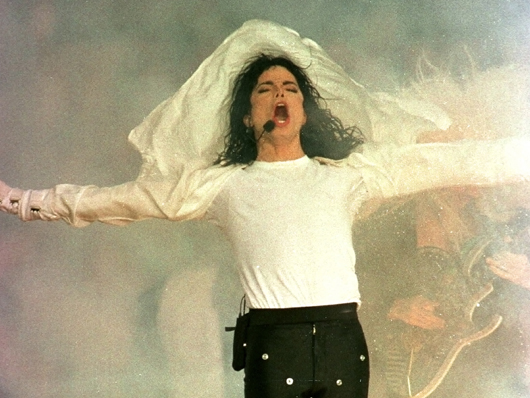
The world at his feet...and six-string power behind him
Michael Jackson died one year ago today, on 25 June 2009, just weeks before he was to begin a series of comeback This Is It concerts at London's O2 Arena.
Amid all of the expected tributes to mark such an anniversary, and they're all certainly warranted in this case, one thing usually goes overlooked: the music itself.
The alchemy of personality in paring Jackson, as he rose from child superstar (then one of the most natural, least self-conscious performers to ever walk the planet) to troubled icon (by then one of the most calculating, self-conscious ever), with guitarists both world famous and unknown, is one of the more fascinating aspects one encounters when examining the late entertainer's oeuvre. The casting was carefully done - and even when steeped in the absurd, the results were, more often than not, glorious moments of rapturous beauty.
On the following pages, we take a look at seven axemen - and axewomen - who provided both silky grooves and molten shred to Jackson's music, and who, in their own disparate ways, helped give him the sound by which he became The King Of Pop.
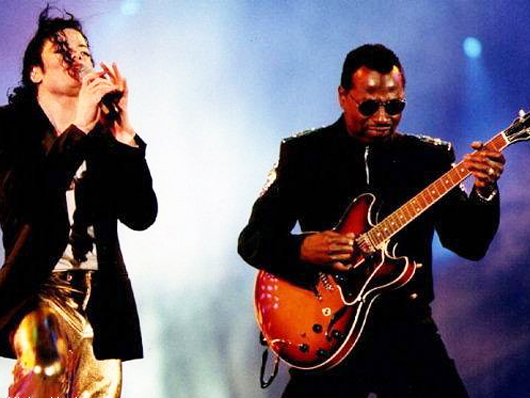
David Williams
Although high-profile session pros such as Larry Carlton and Phil Upchurch played on what was to be Jackson's 1979 commercial breakthrough album, Off The Wall, it was David Williams, plucked from obscurity by producer Quincy Jones, who made the music sing and dance with a funky, in-the-pocket jangle that would be much copied through the years.
Williams' clean rhythmic grooves informed much of Off The Wall, but it was on 1982's Thriller, and particularly the MTV gate-crasher Billie Jean, that the guitarist established his signature sound. Williams humbly referred to his playing as a "secret spice. You don't need much of it, but the right amount gets the job done."
Surprisingly, in the case of Billie Jean, that dash of sonic flavor, a fascinating mix of rhythm meets lead, was captured on a demo. Engineer Bruce Swedien has stated that Williams recorded a pass at Jackson's home studio just after the song was written. Various attempts at re-creating the guitar track were made at LA's Westlake Studio, but nothing could beat the magic of the demo. Sometimes that first pinch of spice is just enough.

Eddie Van Halen
Michael Jackson never wrote a flat-out rocker before, but he penned Beat It because he wanted to write "the type of song that I would buy if I were to buy a rock song." After hearing the demo, producer Quincy Jones knew just who ring up for a guitar solo.
Funnily enough, when Eddie Van Halen received that phone call from Jones, he thought it was a prank. “I used to have this old phone system in the studio," he said on the experience. "Phone rang, I picked it up and there’s this voice saying, ‘Yo, Eddie? That Eddie?’ There was lots of crackling and stuff. And I said, ‘Yeah, who’s this?’ But he obviously couldn’t hear me. So I hung up, figuring it was a fan. Phone rings again, and the same voice says, ‘Hey, Eddie.’ So this time I shout ‘Asshole!’ and hang up. Phone rings a third time. ‘Hey, Eddie, Eddie, it’s Quincy Jones.’ Have I ever felt small."
Guitarist Paul Jackson Jr had already laid down the rhythmic bed of the song when Van Halen arrived at the studio. "I love that high fast stuff you do," Michael Jackson told Van Halen, who proceeded to record two rambunctious solos. Telling Jackson and Jones to pick the one they wanted, Van Halen left the studio with as much money in his pocket as when he came in. "I did it as a favor," he said.
While he received no royalties from Beat It, Van Halen did get a letter of appreciation from Quincy Jones, which was signed 'The Asshole.' Van Halen framed the letter, calling it "classic."

Steve Stevens
With Thriller well on its way to becoming the biggest-selling album of all time, Michael Jackson had his work cut out for him when recording its follow-up, 1987's Bad.
The success of Beat It led Jackson and Quincy Jones to once again seek out the hottest guitarist around, and at the time, Steve Stevens, who had just quit Billy Idol's band, was the highly-coiffed six-string star everybody wanted to look and sound like.
Actually, Stevens played not one but two solos on Dirty Diana - one during the song's mid-section and another during an extended outro. While his lines are, at times, overpowered by the bombastic soundscape of the track, and his own use of effects which can sound a bit washy, it's interesting to hear Stevens quote a tiny portion of the riff from Beat It. Whether it was unintentional or meant as an homage of sorts, it provided a sturdy hook.
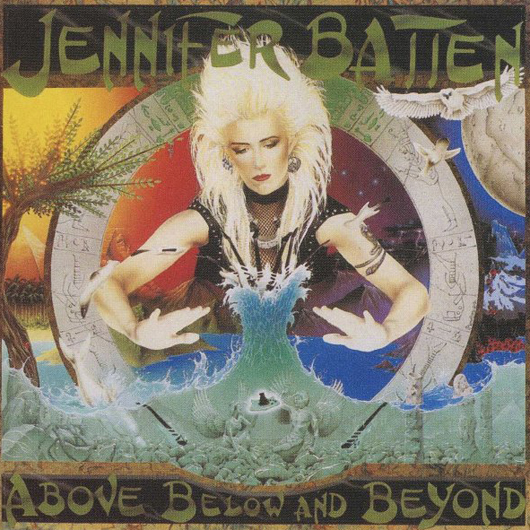
Jennifer Batten
Although her playing never graced any of Michael Jackson's studio recordings, Jennifer Batten is certainly recognizable to the late singer's fans. From the years 1988 to 1993, the way-beyond-flashy dresser, who sported a hairstyle big enough and high enough for three glam bands, was Jackson's go-to live guitarist.
Batten made her first appearance with Jackson on his Bad Tour, during which she had to reproduce not only Eddie Van Halen's solo to Beat It but Steve Stevens' guitar work on Dirty Diana.
A crowd favorite, Batten later toured with Jackson on the runs for Dangerous, HIStory, as well as his performance at the 1993 Super Bowl.
"My having had the opportunity to work with Michael for ten years gave me a very privileged insight," Batten wrote on her website. "I will forever have a deep respect and awe for his many groundbreaking talents and his selfless commitment to humanity and the earth."
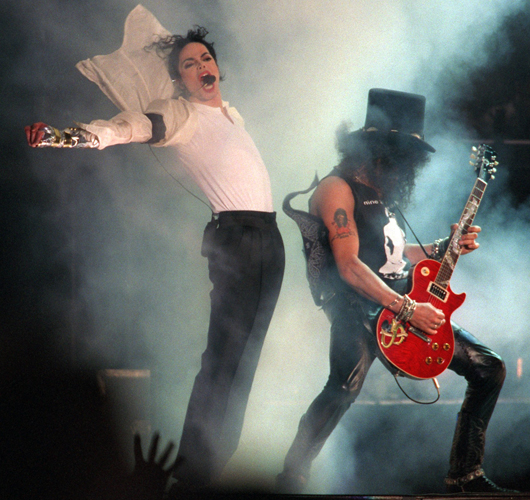
Slash
It took Jackson four years to release another album after Bad, but on 1991's Dangerous, true to form, the singer once again cherry-picked the guitarist everybody was trying to emulate. This time, it was Slash's turn at bat.
A rock 'n' roll dance tune promoting racial harmony, the video to Black Or White found Slash contributing gonzo guitar to the intro skit. (Contrary to rumor, he didn't play the catchy, Stones-like riff - that came courtesy of guitarist Bill Bottrell.)
Black Or White was the album's big smash, but it was on the lesser-known soul meets hard rock number Give In To Me that Slash stretched out with a burning solo. And unlike Black Or White, he even showed up in the video.
But Slash did rock with Jackson on Black Or White on stage during the 1995 MTV Awards, during which he turned in the kind of down-on-his knees, rock-god solo spot that never fails to elicit awe among shredders and wannabes alike.
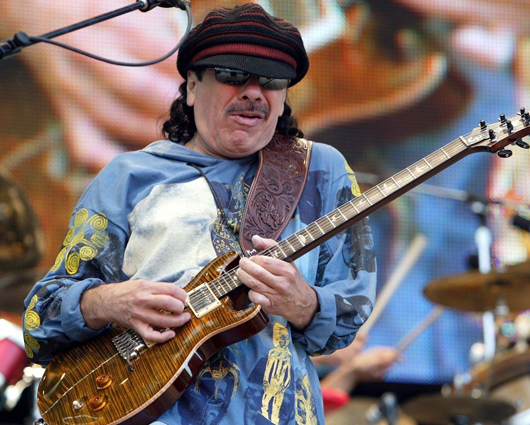
Carlos Santana
It would be 10 years before Michael released another studio album, during which time he faced many well-documented personal and legal problems. Much was riding on 2001's much-hyped (and excessively expensive) Invincible, and in an effort to ensure its success, guitar legend Carlos Santana, riding high on the crossover smash Supernatural, was brought in to lend his talents.
Santana added some fine acoustic guitar playing, a brief but instantly recognizable electric solo and even a little whistling to the mid-tempo, Latin-tinged R&B ballad Whatever Happens.
The song was never released as a single, but that hasn't stopped fans from making their own video treatments.
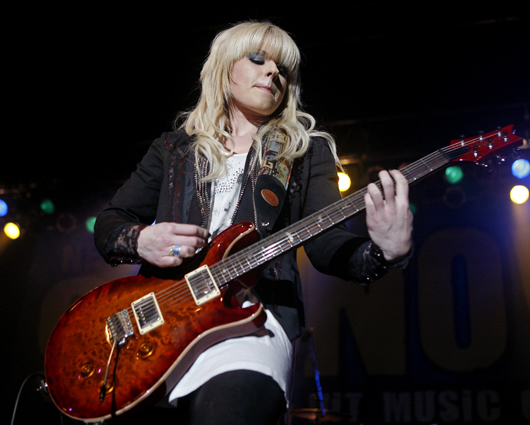
Orianthi
When it was time for Jackson to mount what was intended to be his triumphant return (and some speculated his farewell) to the concert stage at London's O2 Arena for the series of This Is It concerts, his musical director recommended he check out a little-known, Australian-born guitarist he had just seen practically upstage Carrie Underwood at the 2009 Grammy Awards.
Orianthi Panagaris first picked up the guitar as a youngster, after witnessing her idol, Carlos Santana, perform. Although she progressed quickly and had shared stages with Steve Vai, Jeff Beck, ZZ Top and Prince, among others, she had to summon more than a little steely resolve when Michael Jackson came into an audition room to see what she could do.
"Michael came in and sat on the couch and I was told to play Beat It," Orianthi said. "He was sitting there just looking at me, staring into my face, watching every single thing I was doing. He was walking up and down at the front of the stage and asked me if I could play the Beat It solo while I followed him around at the pace he was walking at. He hired me that night."
Orianthi rehearsed with Jackson the night before he died. "I can't believe I got to play with him," she told MusicRadar last year shortly after the singer's death, "and I can't believe he's gone. It hasn't sunk in yet." Of the concerts she never got to play with The King Of Pop, she said, "It would have been so great. Michael really wanted to make those shows his personal best."
Joe is a freelance journalist who has, over the past few decades, interviewed hundreds of guitarists for Guitar World, Guitar Player, MusicRadar and Classic Rock. He is also a former editor of Guitar World, contributing writer for Guitar Aficionado and VP of A&R for Island Records. He’s an enthusiastic guitarist, but he’s nowhere near the likes of the people he interviews. Surprisingly, his skills are more suited to the drums. If you need a drummer for your Beatles tribute band, look him up.
